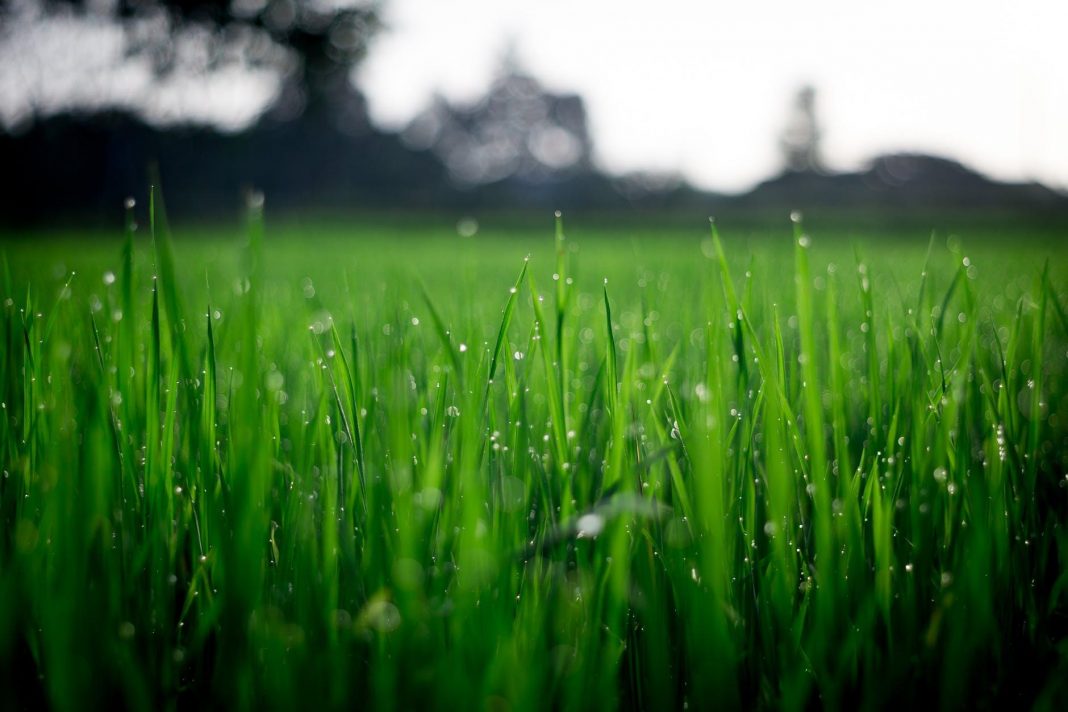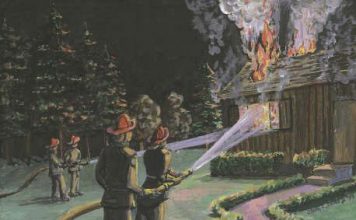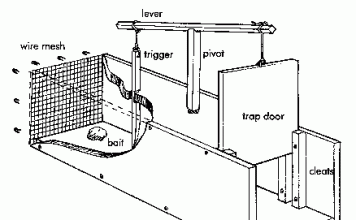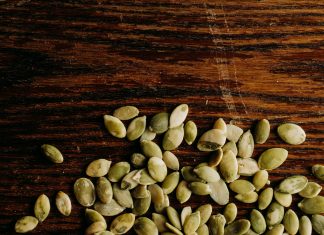 |
|
| Issue #69 • May/June, 2001 |
There are many things parents can give their children, other than plastic toys or a few bucks to play video games at the mall. And one of the most valuable is a garden of their own.
Children of even a very young age thrill at the experience of planting seeds in the warm earth, then watching as plants pop magically out of the soil. My children have all had their own gardens. Sometimes it was a row incorporated in with the family’s “big” garden. But often their gardens were in their own separate plots. And, despite the occasional grumbling at having to regularly weed and water, every one of them became joyous at harvest. You can’t surpass the excitement of eating and home canning scrumptious food that you grew yourself, even at age three.
Learning patience
A child’s garden bonds the parents with the child, as both work together. There are decisions about what to plant, where the garden is to be, special features (such as a bean tipi or sunflower bower), etc. Then the soil must be worked up. For young children, Mom or Dad must dig or rototill the soil. But when the children have grown a bit, they can join in, digging with energy. Even very young children can learn to rake the soil smooth and toss rocks into a bucket. This togetherness is a special time which cannot be duplicated.
 David Clay finds the first Contender green beans of summer. |
Gardening children learn patience, waiting in expectation as germinating seeds slowly develop underground. While they wait, they develop a sense of responsibility. Those baby plants must be nurtured, weeded, and cared for or they die. Just like real human babies.
And what love children shower on their plants. I’ve lost count of the hundreds of times I’ve been dragged to one of the children’s gardens to see a new bean seedling that has magically emerged from the spring soil, a tiny watermelon or pumpkin that has set on the vine, or a butterfly flitting from one flower to the next. And I never cease to share that special excitement.
Having simple chores that have to be done on a regular basis teaches life lessons that cannot be duplicated. Here at our home we believe you labor to eat well, and that this labor should be one of joy, not drudgery. It is great to eat the fruits of your labor. And if you do not labor, or you are slipshod about it, you will not reap the benefits you could have.
Older children
Older children often need a little extra spending money. Instead of just handing them the cash, why not suggest they raise a crop to sell? My children have raised green beans, sweet corn, and tomatoes to market and used the profits to buy school clothes, above and beyond the usual wardrobe I bought for them. They’ve also used the money earned from their garden to buy a bike and even a horse.
By allowing children to become small time market growers, they learn to save money, value their earnings, and work toward realistic goals. These are all things that they must learn for themselves, with a little help from you.
For even a very small child, raising a giant pumpkin for Halloween or the fair which they must tend all summer is a lesson in how to work toward a realistic goal. Children develop confidence, learning that if they persist, they can do anything.
Gardening can be your child’s first step into a self-reliant life.
Garden size
Even if you have quite limited gardening space, your child can still have his or her own garden by container gardening. Children can still feel the thrill of growing, even if their garden is a single plastic tub holding potatoes or a climbing tomato, or if it’s several containers full of green beans, flowers, and pumpkins.
But if you have more space, consider working up a separate garden plot just for your child. And if there is more than one child, discuss with them the option as to whether they would rather garden together or have their own separate plots. Some children prefer to have someone to work with so they can discuss each procedure. Others like to garden alone.
Don’t give the child more than they are ready to handle. Giving a 3-year-old, or a bouncy sort-of-irresponsible 10-year-old, a large garden is not going to work. It’s better to start out smalland let the child ask you for more next yearthan to overburden a youngster with too much work and responsibility. This is an individual thing. Some 10-year-olds are responsible enough to handle the weeding and care of a fairly large garden and can even choose their crops. Others have all they care to handle with a few tomato plants. Don’t force the issue. Gardening should be a joy, not a drudgery.
A nice sized garden for a very young child is about 10-feet by 10-feet. This can be handled by the child with only a little parental help with the hard stuff. It is quick to work up and easy to hoe and hand-weed, yet it allows the youngster to grow quite a wide array of vegetables.
 Halloween is even more fun when the pumpkin is as big as you are, and it comes from your own garden. |
As the child shows more responsibility, and asks for more room, give a little at a time, as they often don’t realize how much work a large garden actually is. Even we adults sometimes get overly energetic during the spring planting time, forgetting all the weeding, thinning, and other care that is going to be required later.
My youngest son, David, has a garden that is 10-feet wide by 50-feet long. He is 10 and has been gardening on his own since he was 3. This plot allows him to grow several crops, including sweet corn and his own special giant pumpkin. But it is still doable for him. Yep, it does get a little weedy from time to time, but he can handle it. And all winter he draws garden plans and looks through seed catalogs to decide what he wants to plant.
David’s garden also provides many added bonuses. It encourages him to read. He reads seed catalogs, children’s gardening books, and attempts to read gardening magazines. It encourages him to write and spell, as we make row markers and write down daily happenings in a small notebook: “The beans popped up.” “The birds eat corn.”
It’s fun and an educational help. We even talk a lot about germination, open-pollinated varieties (from which we gather and save seeds), seed saving techniques, pollination, honey production, life cycles, etc. Many high school subjects are covered with just daily conversations in the garden. Not bad for a 10-year-old.
Suggested crops
It’s best to pick large-seeded vegetables or started plants, such as tomato or broccoli, for younger children. The large items are easier for little hands to hold and plant. And, large seeds quickly develop into lusty plants, which are visible and easily distinguished from weeds, protecting them from over-eager hoeing.
Among the suggested vegetables for children’s gardens are: sweet corn, peas, radishes, green beans, tomatoes, pumpkins, gourds, and annual flowers such as sunflowers, cosmos, marigolds, and morning glories. Help your child choose easy-to-grow varieties, which germinate quickly and grow rampantly. Avoid such crops as carrots and parsnips, as they germinate slowly and produce tiny, slow-growing seedlings. Such crops quickly become overrun with weeds and the child loses interest. Save them for future years when they have had more experience.
I like to throw in one type of vegetable my child does not like to eat. In growing it in their own garden, the child forms an attachment to the vegetable and, when harvested, is much more apt to give it a try. This is especially true when they help you cook it using a really tasty recipe.
Try giant varieties of vegetable seeds. They hold special appeal for children. David now grows giant pumpkins, bushel gourds, giant sunflowers, and giant tomatoes. Kids love harvesting huge vegetables from their own garden. They subscribe to the “bigger the better” philosophy. (You know how they keep asking when they will be “big.”) It’s truly awesome to them to harvest a pumpkin that they can sit on, a tomato that produces slices big enough to cover a slice of sandwich bread, or a sunflower that is taller than Mom and Dad.
Another thing we do is grow ethnic vegetable varieties in our garden. You might like to try that one, too. Our family has Native American rootsCherokee on my husband, Bob’s, side. As the Cherokee have always been a gardening people, there are lots of traditional heritage crops for David to try. We’ve grown Cherokee White Flour Corn, which also makes great sweet corn and is nine feet tall, Cherokee Trail of Tears pole green beans, which mature to a pretty purple, various squash, and Cherokee Cornfield Beans.
Whether your family traces their roots to African-American, Italian, Mexican, Spanish, Irish, or any other roots there are crops your child could grow that would not only produce smiles but pride in their native heritage. Besides it’s a lot of fun to learn about crops our ancestors grew. Even Moms and Dads can learn a lot in the process, and the sharing of this special experience is without measure.
Special effects
Do you want to make your child’s garden magical? Consider adding such special effects as a bean tipi on which pole beans can climb, a sunflower bower, or even a chicken wire-based dragon covered with runner beans resplendent with red flowers and dragon-sized bean pods.
 Plants are easy for young hands to handle. |
A bean tipi is easily constructed by tying four or more poles, one to two inches in diameter, together at the top and pushing the poles into the soil at the bottom, forming a tipi shape. At the base of each pole plant four or five bean seeds. We also add blue morning glory and small mixed gourd seeds for color variation and interest. Using scarlet runner beans, purple-podded green beans, or yellow pole beans also adds variety. Heavily mulch the “inside” of the tipi with straw, then place a small bench in the center. This makes a magical playhouse as the beans, gourds, and morning glories intertwine, grow, and bloom.
A sunflower bower is also great fun. David’s was a square of giant sunflower seeds planted a foot apart all around the square but for a “door” space. When the sunflowers were up a foot or so, we planted pole beans and morning glories at the base of each sunflower stalk. The sunflowers were soon up seven feet high, with twining beans and flowers rapidly ascending the stalks. Tying the tops gently together a bit provided the roof. It was truly amazing in the late summer when it was covered with bean and morning glory vines, leaves, and flowers. A great place to play magic castles and to read special books.
We’ve also tried a dragon and dinosaur, created by forming old chicken wire onto steel reinforcing rod scavenged from a demolished bridge. Seven feet tall and covered by masses of thick pole green beans, they looked almost alive in the evening twilight. Next spring, we’re going to try a flying dragon.
Simpler, yet exciting, projects include an arched garden gate complete with vivid blue morning glories and a small section of fence with brilliant scarlet runner beans climbing rampantly on it.
Remember, too, that the flowers of these climbing beans and flowers attract butterflies and hummingbirds in droves, adding to the magical aspect of even modest projects.
Once you and your children begin to get involved in gardening together, you’ll discover that you have so much in common, from the joy of the first sprouting seeds to the juicy taste of the super fresh harvest. And both parent and child will learn so many invaluable lessons, naturally, without stress and strain, that it is scarcely believable. I think God gave us children and gardens for the same reason: to learn of the joy of nurturing a living being and discovering the unique treasures brought by watching the garden, and the child, mature.














